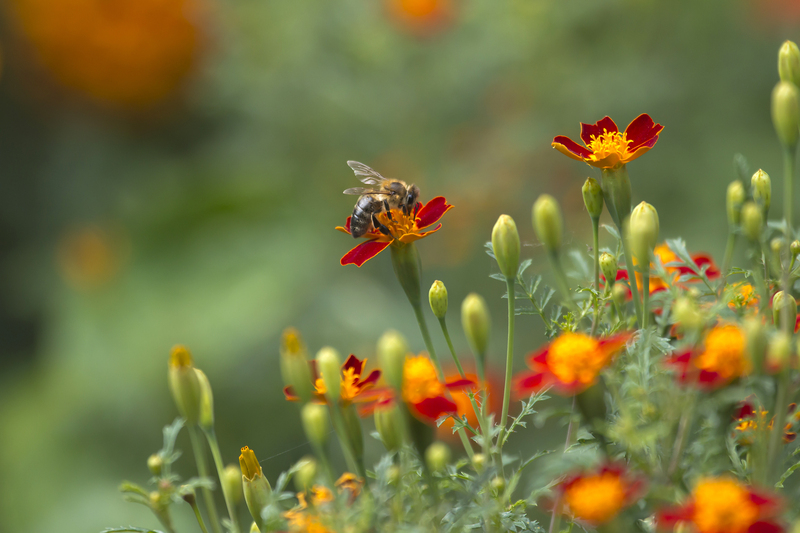From Pollen to Pets: Managing Multiple Allergens in Your Garden
Posted on 26/04/2024
Introduction
Gardening is a beloved hobby for many, providing countless benefits such as stress relief, physical activity, and a source of fresh produce. However, for those who suffer from allergies, spending time in the garden can be more of a challenge than a relaxing pastime. From pollen to pet dander, there are numerous allergens that can make gardening a difficult task. But with proper management and precautions, it is possible to create an allergy-friendly garden that everyone can enjoy. In this article, we will discuss how to identify and manage multiple allergens in your garden.

The Allergens in Your Garden
Firstly, it is important to understand the different types of allergens that may be present in your garden. Pollen is the most common culprit, especially during spring when plants are actively blooming. Other common allergens include mold spores, dust mites, and pet dander from outdoor pets such as cats and dogs. It is also worth noting that some plants themselves can cause allergic reactions in certain individuals.
Identifying and Managing Pollen Allergies
Pollen allergies are typically caused by trees, grasses, and weeds releasing their tiny particles into the air. To manage pollen allergies in your garden, avoid planting any known high-allergy plants such as ragweed or oak trees. Instead, opt for low-allergy plants like tulips or fruit trees. You can also minimize exposure by regularly removing weeds and keeping the lawn short.
Another helpful tip is to monitor the pollen count in your area through local weather reports. On days with high pollen counts, it may be wise to limit your time outdoors or wear a mask while gardening.
Mold Spores and Dust Mites: Keeping Your Garden Clean
Mold spores and dust mites thrive in damp environments, making gardens with high humidity or excessive shade more prone to these allergens. To prevent mold and dust mites from taking over your garden, keep the area well-ventilated and avoid over-watering your plants. Regularly sweeping and raking up fallen leaves and debris can also help keep these allergens at bay.
Managing Pet Dander
If you have outdoor pets, it may be challenging to manage their dander in the garden. One option is to designate a specific area for your pet to play in and regularly clean up any pet hair or waste in this designated area. You can also try using hypoallergenic grooming products for your pets to reduce dander production. Lastly, be sure to thoroughly wash your hands after handling your pets before touching your face or gardening tools.
The Pros and Cons of an Allergy-Friendly Garden
The biggest pro of creating an allergy-friendly garden is obviously reducing allergen exposure for both yourself and others who may visit your garden. This can create a more enjoyable experience for everyone, especially those who suffer from severe allergies.
However, there are also some cons to consider when planning an allergy-friendly garden. For example, opting for low-allergy plants may limit the variety of plants you can have in your garden. Additionally, some of the management techniques mentioned above may require extra time and effort on your part, such as regularly cleaning up pet dander or monitoring pollen counts.
Tips for Creating an Allergy-Friendly Garden
To summarize, here are some key tips for creating an allergy-friendly garden:
- Avoid planting high-allergy plants
- Keep the garden clean and well-ventilated
- Monitor pollen counts and limit time outdoors on high pollen days
- Designate a specific play area for outdoor pets
- Use hypoallergenic grooming products for pets

Takeaways
Managing multiple allergens in your garden may seem like a daunting task, but with these tips in mind, you can make it a more enjoyable experience for everyone. By selecting low-allergy plants, keeping the garden clean and well-ventilated, and monitoring the pollen count, you can reduce exposure to common allergens. Additionally, taking extra precautions with outdoor pets can also help minimize dander in your garden.
Conclusion
Gardening is a wonderful hobby that should be accessible to everyone regardless of allergies. By understanding the different types of allergens and following these tips, you can create an allergy-friendly garden that you can enjoy without worrying about allergies. Remember to regularly clean and maintain your garden to keep allergen levels at bay. Happy gardening!












